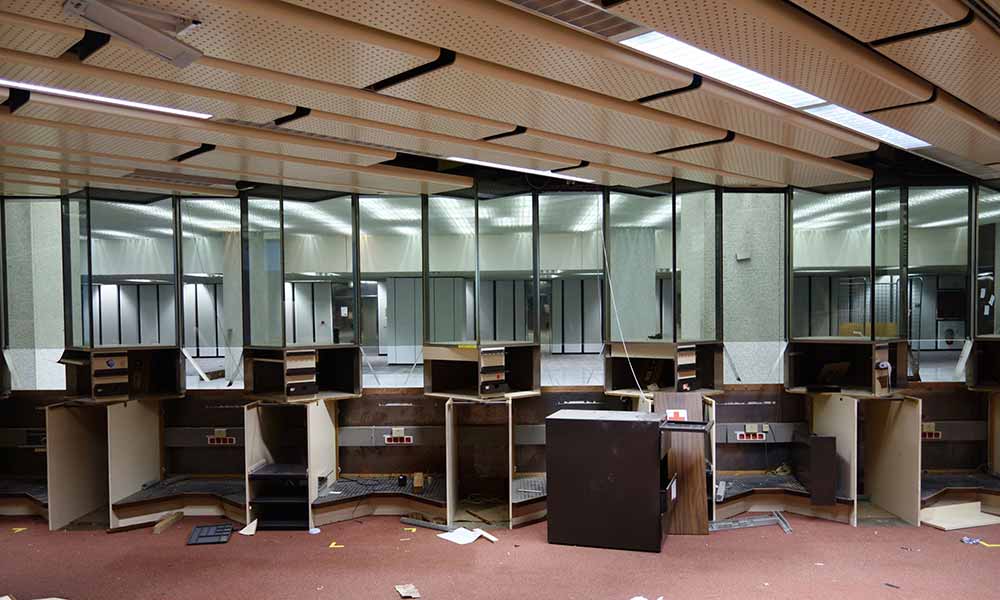Deconstruction is the purposeful and careful disassembly of a building so as to salvage construction materials and property suitable for reuse. The mandatory deconstruction of buildings has been implemented in cities like Portland, Oregon mandating full deconstruction for houses built in 1916 or earlier or are designated historic. The drafted resolution outlines reasons for implementation including:
- Deconstruction methods minimize dust and increase the likelihood of discovering dangerous materials.
- Salvaging the material supports the local economy, creates jobs and produces a supply of high-quality, reusable material for community members at an affordable price.
- Waste associated with C&D (Construction and Demolition) waste was estimated to be 20-25% of landfill waste.
- Significant carbon reduction benefits when new materials do not need to be produced1
An overriding goal at The Green Mission Inc., is to help individuals and corporations choose to deconstruct rather than demolish existing building structures. We would be excited to see ordinances like the one adopted in Portland be replicated feasibly across the country, specifically tailored to address the needs of each geographic region. As we study the deconstruction industry, we have identified common obstacles to deconstruction that appear to be universal in nature, regardless of geographic location.
- 1.Lack of warehousing space - A large commercial deconstruction may include 200 doors and local receiving nonprofits or government entities cannot use such a high quantity of doors in one drop. Additionally, they do not have warehousing space to store the additional doors until they can be used. This leads to deconstructed materials being rejected and potentially going to the landfill.
- 2.Not all materials find a donation home - An additional challenge is when a nonprofit or government entity donee is chosen but they can only take a limited amount of donated materials. At this point, many donors stop the process and the diversion rate is limited to what is accepted by the donee with the remainder going to the landfill.
- 3.Demolition vs. deconstruction timeline - A major hurdle to deconstruction is often the extra time necessitated by deconstruction instead of demolition. By definition, deconstruction takes a longer amount of time due to the nature of careful disassembly versus a quick knock down and drag-off.
- 4.Higher cost of deconstruction - Deconstruction services can be anywhere from 50-100% more expensive than demolition, including the landfill tipping fees included in the cost of deconstruction. Again, this is because of the intense labor needed to carefully disassemble.
How can we overcome these obstacles? At The Green Mission Inc., we propose the following:
- 1.Create a Just-in-time inventory system, nationwide, of deconstructed materials enabling nonprofits and government entities around the county to receive immediate notification of what has become available. A deconstruction in Phoenix might provide the needed materials for a hospital in Wichita and be of such import that it makes sense for Wichita to arrange transportation of materials. Implementation of this inventory system would require an app-based model accessible to all organizations who can accept donated materials. Additional logistics for transport could be studied for feasibility including corporate sponsorship using excess capacity on shipping lines as a corporate act of goodwill.
- 2.Creating a front-loaded and well researched national database of accepting organizations listing their name, location, what materials they will always accept, what materials are never accepted and their transportation capacity could allow a donor to choose a second, third, fourth…etc. donation home for materials beyond the initial one donee chosen at the outset.
- 3.Preferential treatment can be given by localities to deconstruction projects enabling them to begin their processes without the permitting required for demolition. This helps overcome the demolition timeline by giving deconstruction jobs a head-start.
- 4.Individual and corporate federal tax deductions exist for the value of deconstructed building materials in some cases. For individuals, the deduction is taken on tax form 1040 Schedule A—Itemized Deductions as a non-monetary charitable contribution with a 50% Adjusted Gross Income limitation and 5-year carry-forward. Corporations take the deduction on their annual 1120 tax return filing subject to a 10% of net income limitation (with specific add-backs to income) with the same 5-year carry-forward period. These donations require an appraisal to be produced deemed “qualified” by the IRS for donations in excess of $5,000 valuation. These tax deductions can help bring deconstruction costs closer to equal or maybe slightly ahead of demolition through conservative application of the tax law to include accurate appraisals devoid of artificial inflations.
We continue to research deconstruction best-practices and to work within the industry to remove impediments to deconstruction. Please reach out should you have any questions, areas you would like us to research or feedback to: Mayur@thegreenmissioninc.com.
Reference Links:
1 Portland Oregon, Deconstruction Ordinance Adopted July 2016 Effective October 31, 2016


